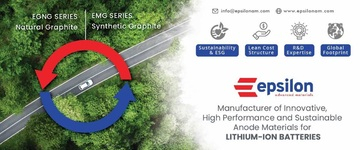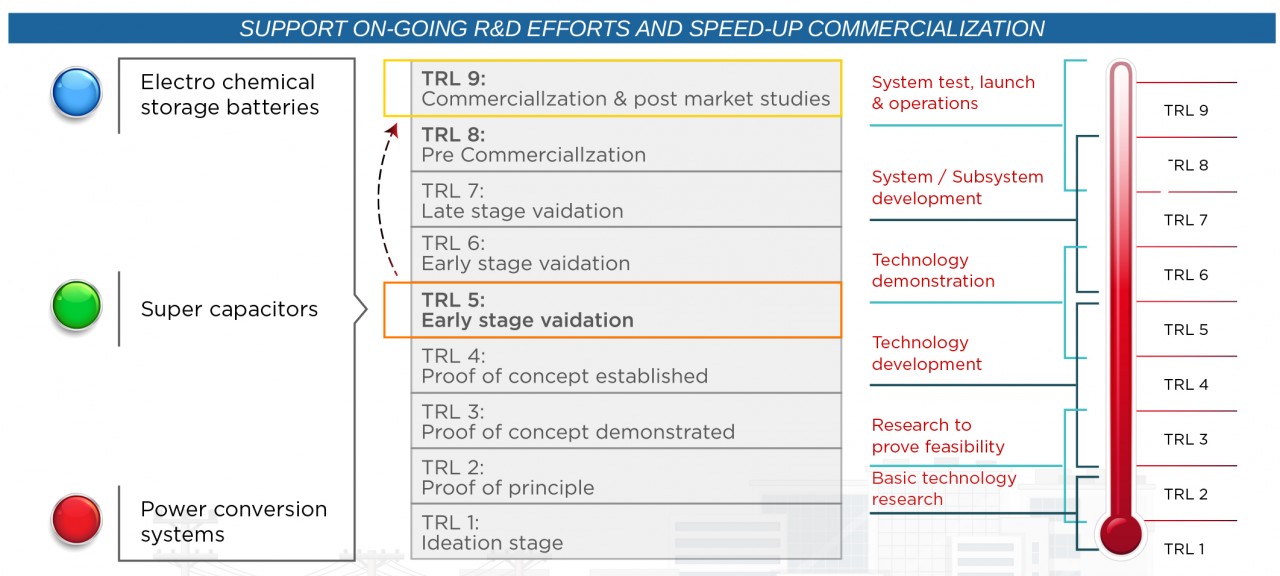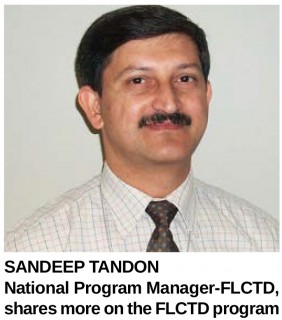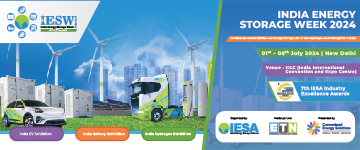UNIDO-CES partnership to promote energy storage innovations in India
The 'Facility of Low Carbon Technology Deployment (FLCTD)' project, launched by the United Nations Industrial Development Organization (UNIDO) jointly with the Bureau of Energy Efficiency, came up with an expansion this year to include three more technology verticals in an innovation challenge.
The FLCTD project was started in 2016 with the main objective of facilitating deployment and scaling up of low-carbon technologies in India, by addressing technology gaps to mitigate climate change and promote use of clean energy applications.
This year UNIDO expanded the project and added three technology verticals - Energy Storage, Industrial IoT and Industrial Resource Efficiency - to conduct an innovation challenge.UNIDO also engaged Customized Energy Solutions,
India (CES-India) as the nodal agency to support the project management unit in the planning and implementation of innovation challenge in electrical energy storage. India Energy Storage Alliance (IESA) is a supporting partner for this Innovation Challenge. Other partners of the FLCTD program include, CII-GBC, Sangam-AIC, Intellecap, Start-Up India and AGNII.
The energy storage and e-mobility sector are at an exciting stage in India. A decade ago, e-commerce was one of the booming sectors in India followed by financial services and payment platforms, and predictably, these sectors attracted most of the investments by both angel investors and equity investors. Interestingly, in the last few years, the Indian manufacturing ecosystem has caught the attention of investors and now the investments have shifted from the services sectors to core manufacturing and technology space.
Growth in EV & ES technologies
In the last five years, many young entrepreneurs in India have preferred setting up engineering, R&D, production, and manufacturing-based startups. Several companies have particularly started to focus on e-2W, e-3W and e-4W charging infrastructure, swapping, powertrain, battery management systems (BMS), thermal management, advanced energy storage, Li-ion, and other emerging energy storage technologies like metal-air, flow batteries, sodium-based batteries, hydrogen base fuel, etc.
India has a huge market for conventional technologies like lead-acid batteries. With a high lifecycle, high-efficiency, and stiff price reduction, Li-ion is giving a tough competition to current lead-acid technologies. Over the years, Li-ion batteries have evolved from lithium cobalt oxide, lithium manganese oxide, lithium iron phosphate, lithium nickel cobalt, aluminum oxide, nickel-manganese-cobalt, and emerging technologies like Li-Air, and Li-Sulphur. Other technologies like flow batteries (vanadium redox battery, zinc band bromine battery), Sodium-based batteries, and zinc-air are also few of the upcoming developments for specific end-applications.
Indian institutions like Indian Space Research Organisation (ISRO) and Central Electro Chemical Research Institute (CECRI) have developed indigenous Li-ion cells for energy storage demand in EV and grid-scale renewable energy integration projects. In 2019, more than 137 companies showed their interest to licence ISRO's Li-ion technology to manufacture it domestically. Following which, more than 110 new startups and large companies attended the pre-bid conference at Vikram Sarabhai Space Centre (VSSC) in Kerala. ISRO selected 10 companies for the transfer of its Li-ion cell technology.
UNIDO-CES India partner to promote innovation
To support and encourage the new innovations in Indian energy storage and e-mobility space, the FLCTD by UNIDO on November 1, 2020, launched the fourth round of the innovation challenge.
The aim of the challenge is to identify high-impact opportunities that have the potential for energy saving along with large-scale carbon emission reductions, and to provide financial support for field validation/beta testing of their technology.
The project supports innovative technologies in advance stage of development for field demonstration and validation. The project does not support innovation that is at the ideation-stage, proof-of-concept or at lab-scale.
The FLCTD project offers
•Financial support up to $50,000 for demonstration and validation in actual field conditions (β-testing)
•Technical mentoring by UNIDO, CES, CII-GBC and subject experts,
•De-risking of innovations before commercial launch
•Industry linkages
•Financial mentoring and fund-raising support
Who can apply
•Indian technical institutes, universities, research institutes, etc.
•Startups in collaboration with industry/ academia/research institutes
•Micro, small and medium enterprises (MSME)
•Industries
•Public sector enterprises
•Government laboratories
•Non-profit organizations
•Technologies funded under Department of Science and Technology (DST) and other government schemes, at pre-market phase (Technology Readiness Level 4 - 6) and ready for field trials or demonstration.
Technologies covered in the innovation challenge
The challenge covers technologies such as electrochemical batteries, supercapacitors, critical components for electrical energy storage systems including power conversion systems, while the applications include off-grid stationary applications, e-mobility, battery recycling, grid-connected and behind-the-meter.
Companies/institutes/startups working on innovation in electro-chemical battery, battery management system (BMS), super capacitor or a combination of battery and super-capacitor, to address a technology gap in end-use application to improve the adoption of electrical energy storage system are highly encouraged to apply for the FLCTD project.
For details, visit:
www.low-carbon-innovation.org
Bringing lab-scale technologies to market
Several IITs and national research labs have been working on research in Li-ion batteries. At the same time there is a big gap in the commercialization of these innovation as well as linking R&D to industrial needs and their timelines. Hence, most of the local manufacturing companies if interested in setting up a Li-ion cell manufacturing plant in India may need to license technologies from countries like Korea, Japan, China, Germany, the US, Canada, the UK, or Australia. This has also been the case in the lead-acid industry, where leading lead-acid providers have traditionally licensed intellectual property from American, Japanese, or Chinese companies.
Globally, energy storage and e-mobility sector are dominated by large legacy companies, but the Indian market is witnessing a different trend. While major conventional petrol- and diesel-base vehicle manufactures have forayed in EV manufacturing in India, there has also been a surge of new startups in the EV space; this proliferation is largely driven by the government's vision for 2030. The overall message is loud and clear that the government and private players are serious about e-mobility and transitioning to cleaner technologies.
Recognizing the momentum in the industry, IESA organized an innovation workshop at India Energy Storage Week (IESW) on November 2, 2020, in association with UNIDO. The program was aimed at startups in the e-mobility, clean energy, energy storage, and clean transportation sectors
FLCTD Innovation Challenge – Success stories
In the last three years, FLCTD Program has successfully awarded 40+ winners and committed over `8 crore in financial support. The past winners included organizations working on innovative technologies in waste heat recovery, space conditioning, and pumps and motors.
For this year, the application remains open for industrial IoT, industrial resource efficient and electrical energy storage.
What is the long-term vision of the program and what do you hope to achieve?
The project aims to strengthen the innovation eco-system in India, particularly for the development of technology-based solutions that are helping address the energy and climate change issue. The project is also attempting to improve the academia-entrepreneur-industry collaboration to bring innovative technology solutions so that all stand to benefit.
What are some of the technologies you are particularly excited to see?
In the past three years, the FLCTD innovation challenge has managed to bring to the forefront both the entrepreneurs and their technology solutions that find application in industrial and commercial sectors. It is heartening to see young entrepreneurs have developed solutions, which greatly help to reduce the energy consumption and aid the decarbonization of the food and dairy value chain when scaled up. These solutions have been validated under the FLCTD project.
Why should companies apply for the FLCTD Project?
The FLCTD project is unique as it provides financial support to validate innovative technology solutions that are in the advanced stage of development and thus accelerate its commercial launch. The companies and startups can benefit from the project since it provides the much-needed financial and technical mentoring support, while the technology is being validated in the actual working environment. It accelerates the commercialization of innovation.

















